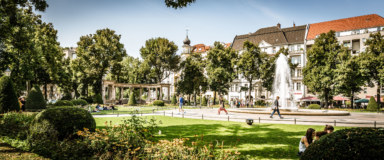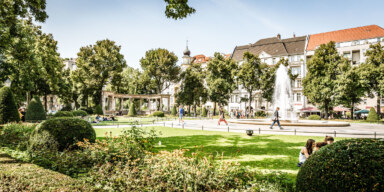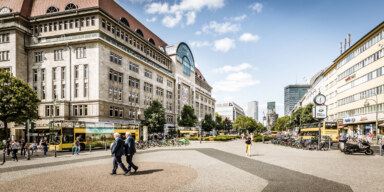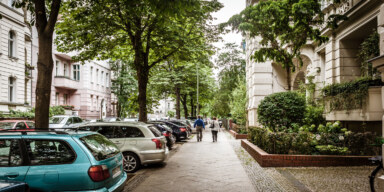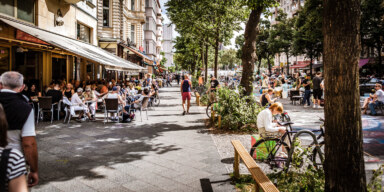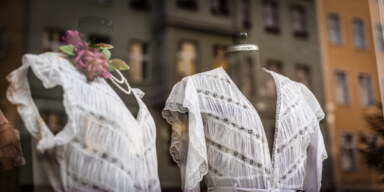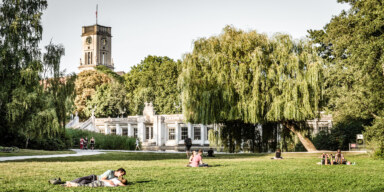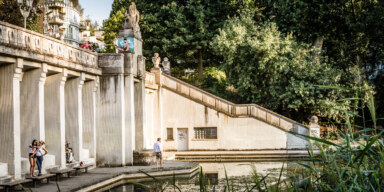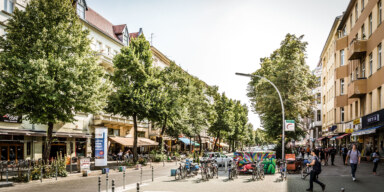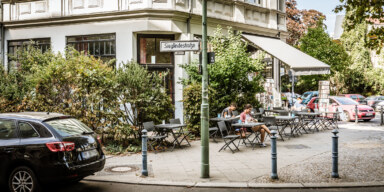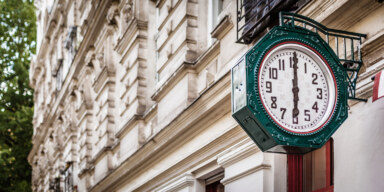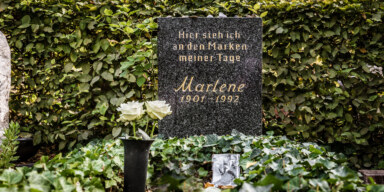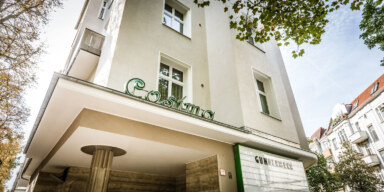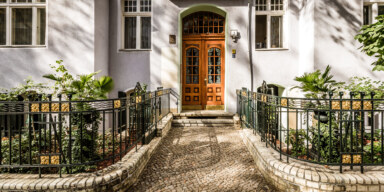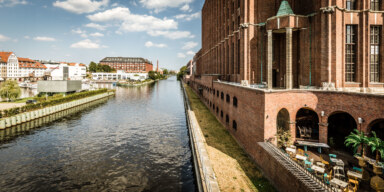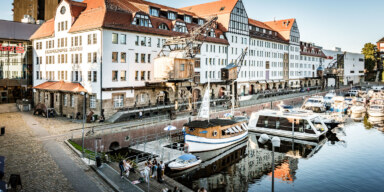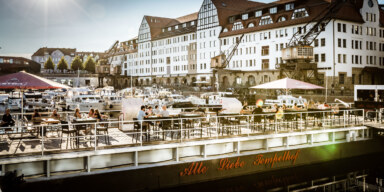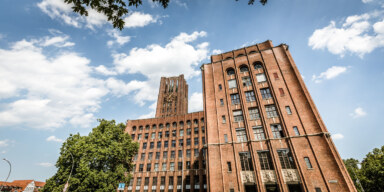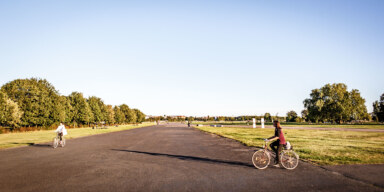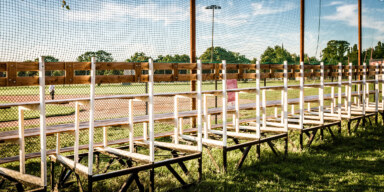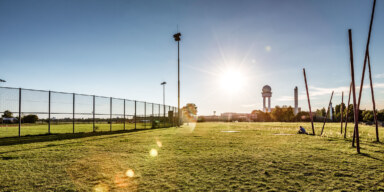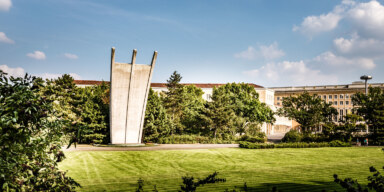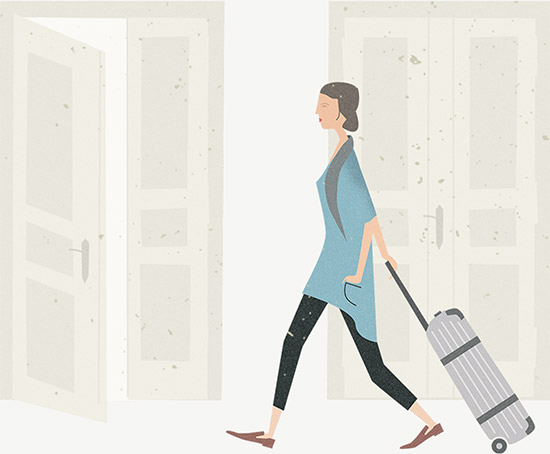Schöneberg
The beautiful one
A colourful canvas: Schöneberg’s people, streets, buildings – dignified old building stock, lofty ceilings towering over polished parquet floors. Live and let live, to each his own. There’s plenty of space for every kind of lifestyle, bohemians and bourgeois alike. Side by side. Hand in hand, even the boys. An endless flurry of activity under the rainbow, ever since the heady Twenties. Normalesque extravagance. Reflections: in a café, an actress checking her face in a mirror, a high school teacher engrossed in the daily headlines.
Slightly off-centre but very busy: Winterfeldtplatz, boasting Berlin’s largest Saturday open-air markets. Take a stroll and find the best produce of the region, from cut flowers to cauliflower, from fresh meat to felt slippers. Best enjoyed under a blue sky. The side streets offer attractive small cafés, bars, fashion boutiques and charming restaurants from elegant dining to fingerfood. You can spend hours in hair salons, try on shoes, find inspiration in the antique shops and antiquarian booksellers’ and enjoy what claims to be the best coffee in town. The most popular residential spot is the area between Fuggerstraße, Goltzstraße and Akazienstraße with its classy Wilhelminian-style buildings. Lucky are those who can snap up one of these renovated apartments with double doors and a balcony.
For those who simply want to take a look at some impressive Art Nouveau facades and four-metre-high rooms with stucco ceilings, all you need to do is visit coming home on Viktoria Luise Platz. Whether the coffee we treat you to is the best in town remains debatable, but from our office window you get an impressive view of the square. Right opposite us, hidden behind Number 9, is a once well-known but now forgotten elegant city palace. Its rooms are like out of a fairytale, behind it is an enchanted garden. As a special treat for the aficionados of Prussian history (or the lovers of old Berlin), coming home offers an apartment with access to the Emperor’s daughter’s garden. The residence of Princess Viktoria Luise.
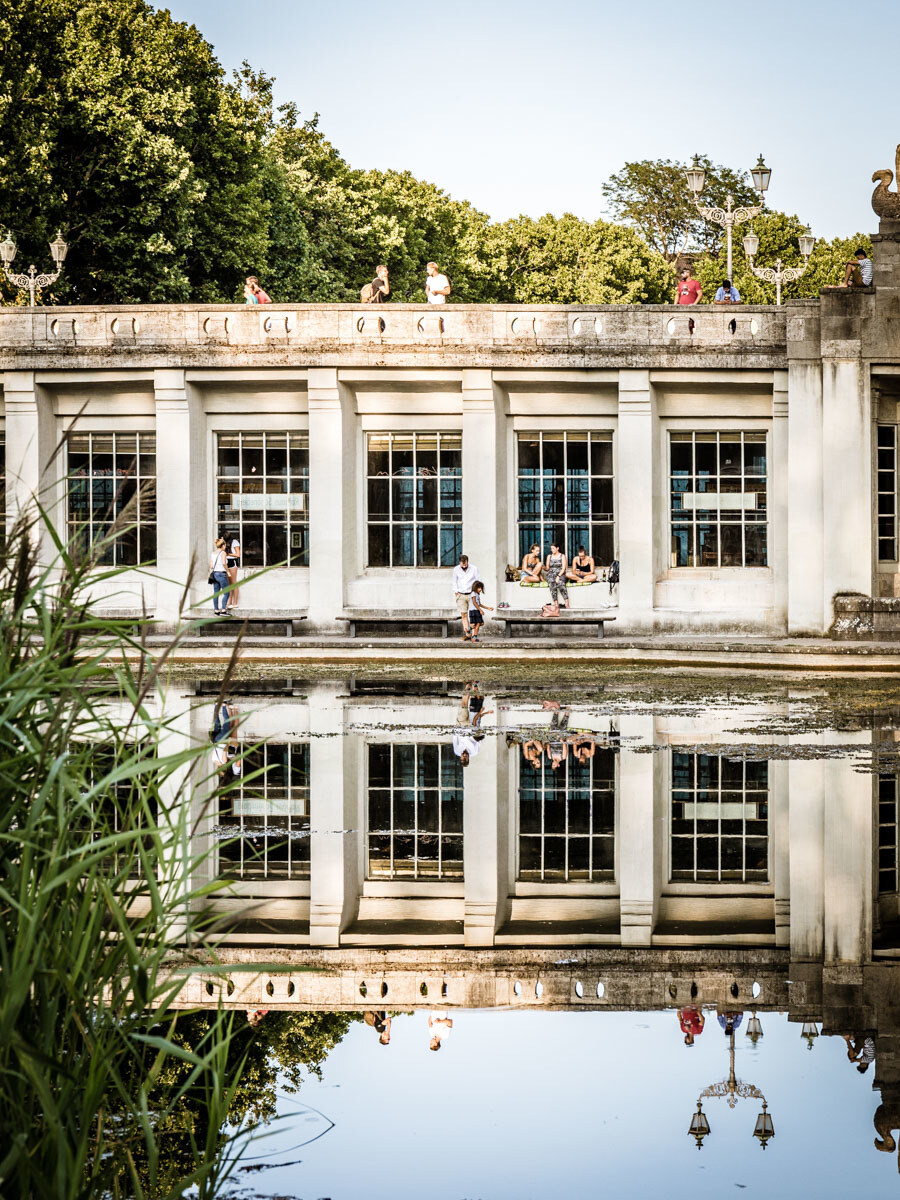
» There’s plenty of space for every kind of lifestyle, bohemians and bourgeois alike. «
Somewhat less spectacular are the residential buildings of the Twenties and Fifties. They are smaller in footprint, but also come at a significantly lower rent. In our exposés we call them “old newbuild”.
Within walking distance, discover the greatest retail paradise on the European mainland. What Harrods is to the Londoners and Macy’s to the New Yorkers, is matched by KaDeWe, or Kaufhaus des Westens, Berlin’s legendary luxury department store. It has been here since 1907. Food lovers are on Cloud 9 on Floor 6, where you find fresh oysters and eminent champagnes plus at least three hundred types of cheese. Apartments around Wittenbergplatz are scarcer than shops, so, needless to say, rents are on the high side.
A reference to the Bavarian Free State, round the corner from here: Bamberger Straße takes you into the “Bayerisches Viertel”. Quiet and serene, it is a much sought-after residential location. Nicely groomed front gardens, majestic old trees and elegant facades in a Southern German Renaissance style. All the more conspicuous within the overall peace and quiet: the “Stolpersteine” - stumbling stones - small brass squares set in the pavement outside the front doors as reminders of the dreadful fate of local Jewish citizens in dark times…
Schöneberg has made it into the history books. Its town hall was the seat of office of famous mayors like Ernst Reuter and Willy Brandt but also Weizsäcker and Wowereit. Back in 1963 this was where John F. Kennedy was cheered by the crowd and loved for his famous line famous line that resonates with so many, even today: “Ich bin ein Berliner!”
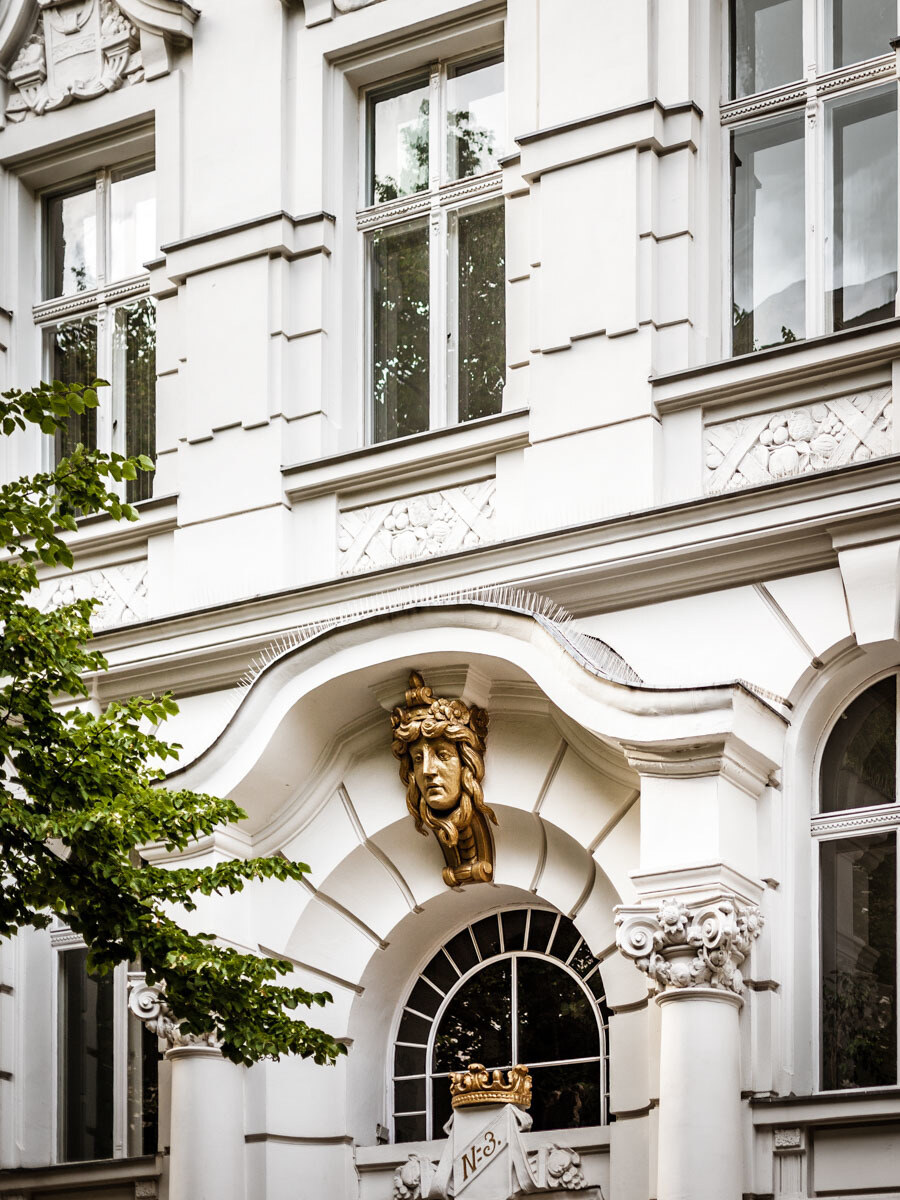
Friedenau
The peaceful one
Friedenau is like a bookshelf: Names crop up like Günter Grass, Max Frisch, Erich Kästner, Uwe Johnson, Kurt Tucholsky – they all lived here and inspired the world with their literary works. Marlene Dietrich and Helmut Newton were born (and eventually buried) here, and in the late Seventies, David Bowie trod the ground between Hauptstraße, the Hansa Studios and “Heroes”). Scores of celebrities in a small spot. It is no surprise that artists abound in this area. Lovely ivy-covered brick villas and stuccoed Art Nouveau buildings breathe their own quiet charm. Lots of green. You walk on the original paving stones laid in the days of the Kaiser. Live in the centre of things but like in a village – just chill. Grouped around Breslauer Platz, you find an organic supermarket, cafés, restaurants and grocery stores, and in Fregestraße and Holsteinische Straße, coming home has a number of attractive apartments in old buildings – even surprisingly moderate in price. Round the corner, more opportunities for a spending spree: Schloßstraße is one of the city’s most popular shopping areas. And for the occasional getaway: nobody needs a car round here. The U-Bahn takes you anywhere you want.
» Lovely ivy-covered brick villas and stuccoed Art Nouveau buildings breathe their own quiet charm. «
Tempelhof
The flying one
This airport is a legend in itself. A set of many films, an iconic work of architecture, Europe’s largest piece of historic urban architecture. When the Soviet Union blocked all traffic to and from West Berlin, the Allied Forces organised an airlift programme to bring supplies into the city. Locals affectionately called their planes “Rosinenbomber” – raisin bombers. In 2008, the “mother of all airports” (thus nicknamed by Norman Foster) was decommissioned. Following a referendum, it was decided not to turn the area into construction land but keep it as a recreational area. A mini-break in the middle of town. A swathe of open land, the size of 400 (!) football fields, turned into an El Dorado for skaters, kite surfers and hang gliders. On the ground, much sunbathing and barbecuing.
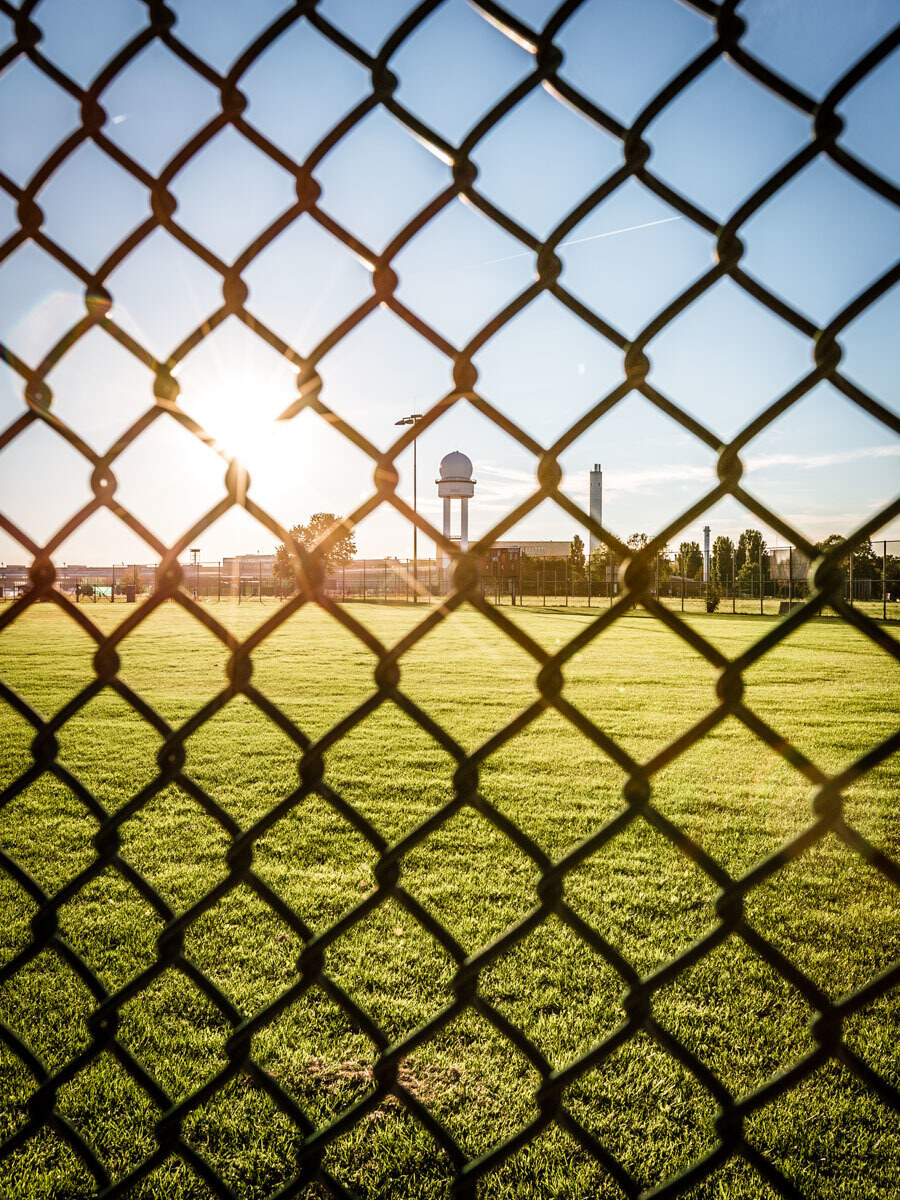
» This airport is a legend in itself. A set of many films, an iconic work of architecture, Europe’s largest piece of historic urban architecture. «
More and more young people and families are discovering the Tempelhofer Feld and its surroundings. Residential developments from every decade offer flats at low rents. Unlike the “hip” parts of town, this area still has moderately priced flats in old buildings. Tempelhof is quiet and middle-class. It has a mix of single-family owner-occupied houses, apartment buildings, and commercial and industrial properties. Its people are from a wide range of backgrounds and cultures. Many of the residents still speak in the Berlin vernacular – not a trace of invading urban hipsters.
A favourite shopping area round here is Tempelhofer Damm, providing everything retail has on offer. At is centre is the new shopping mall at the Tempelhofer Hafen, complete with cafés and restaurants. There is cultural entertainment as well: A former factory, UFA Fabrik, hosts concerts and workshops as well as having its own farm and artisan organic bakery. This is where coming home holds one of its most curious properties: a sea-going houseboat with all the proper mod-cons, including real running water.
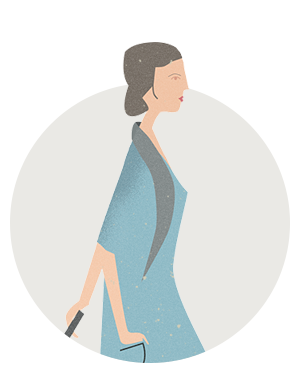
Renting an apartment – simple and secure
We at coming home will do our utmost to support and advise you. Our website provides you with a wealth of useful tipoffs for your apartment search, and tells you more about our free-of-charge services.
Infos for tenants
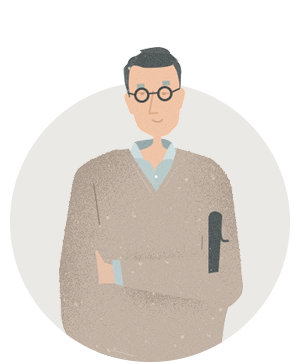
Secure lettings
If you wish to offer a furnished property for rent we are at your side throughout the tenancy process and ensure you get the best possible advice and support.
Infos for landlords

Magazine
Care to find out how other Berliners live? Read our series of personal home stories and get to know some extraordinary habitats and their creative residents in our magazine: “How people live Berlin”
Magazine
